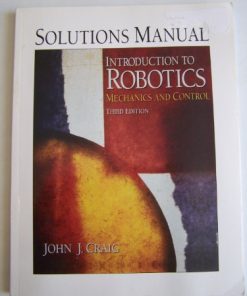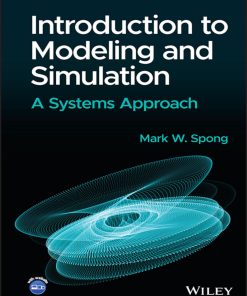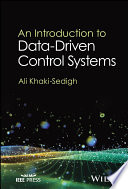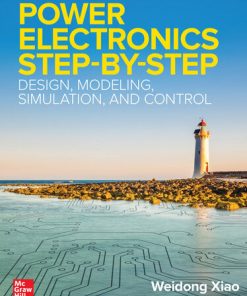(Ebook PDF) An Introduction to System Modeling and Control 1st Edition by John Chiasson 1119842913 9781119842910 full chapters
$50.00 Original price was: $50.00.$25.00Current price is: $25.00.
An Introduction to System Modeling and Control 1st Edition by John Chiasson – Ebook PDF Instant Download/DeliveryISBN: 1119842913, 9781119842910
Full dowload An Introduction to System Modeling and Control 1st Edition after payment.
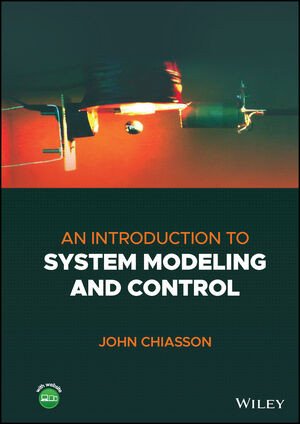
Product details:
ISBN-10 : 1119842913
ISBN-13 : 9781119842910
Author: John Chiasson
In An Introduction to System Modeling and Control, Dr. Chiasson delivers an accessible and intuitive guide to understanding modeling and control for students in electrical, mechanical, and aerospace/aeronautical engineering. The book begins with an introduction to the need for control by describing how an aircraft flies complete with figures illustrating roll, pitch, and yaw control using its ailerons, elevators, and rudder, respectively. The book moves on to rigid body dynamics about a single axis (gears, cart rolling down an incline) and then to modeling DC motors, DC tachometers, and optical encoders. Using the transfer function representation of these dynamic models, PID controllers are introduced as an effective way to track step inputs and reject constant disturbances.
An Introduction to System Modeling and Control 1st Table of contents:
1 Introduction
1.1 Aircraft
1.2 Quadrotors
1.3 Inverted Pendulum
1.4 Magnetic Levitation
1.5 General Control Problem
Notes
2 Laplace Transforms
2.1 Laplace Transform Properties
2.2 Partial Fraction Expansion
2.3 Poles and Zeros
2.4 Poles and Partial Fractions
Appendix: Exponential Function
Problems
Notes
3 Differential Equations and Stability
3.1 Differential Equations
3.2 Phasor Method of Solution
3.3 Final Value Theorem
3.4 Stable Transfer Functions
3.5 Routh–Hurwitz Stability Test
Problems
Notes
4 Mass–Spring–Damper Systems
4.1 Mechanical Work
4.2 Modeling Mass–Spring–Damper Systems
4.3 Simulation
Problems
5 Rigid Body Rotational Dynamics
5.1 Moment of Inertia
5.2 Newton’s Law of Rotational Motion
5.3 Gears
5.4 Rolling Cylinder
Problems
Notes
6 The Physics of the DC Motor
6.1 Magnetic Force
6.2 Single‐Loop Motor
6.3 Faraday’s Law
6.4 Dynamic Equations of the DC Motor
6.5 Optical Encoder Model
6.6 Tachometer for a DC Machine*
6.7 The Multiloop DC Motor*
Problems
Notes
7 Block Diagrams
7.1 Block Diagram for a DC Motor
7.2 Block Diagram Reduction
Problems
Note
8 System Responses
8.1 First‐Order System Response
8.2 Second‐Order System Response
8.3 Second‐Order Systems with Zeros
8.4 Third‐Order Systems
Appendix: Root Locus Matlab File
Problems
Note
9 Tracking and Disturbance Rejection
9.1 Servomechanism
9.2 Control of a DC Servo Motor
9.3 Theory of Tracking and Disturbance Rejection
9.4 Internal Model Principle
9.5 Design Example: PI‐D Control of Aircraft Pitch
9.6 Model Uncertainty and Feedback*
Problems
Notes
10 Pole Placement, 2 DOF Controllers, and Internal Stability
10.1 Output Pole Placement
10.2 Two Degrees of Freedom Controllers
10.3 Internal Stability
10.4 Design Example: 2 DOF Control of Aircraft Pitch
10.5 Design Example: Satellite with Solar Panels (Collocated Case)
Appendix: Output Pole Placement
Appendix: Multinomial Expansions
Appendix: Overshoot
Appendix: Unstable Pole‐Zero Cancellation
Appendix: Undershoot
Problems
Notes
11 Frequency Response Methods
11.1 Bode Diagrams
11.2 Nyquist Theory
11.3 Relative Stability: Gain and Phase Margins
11.4 Closed‐Loop Bandwidth
11.5 Lead and Lag Compensation
11.6 Double Integrator Control via Lead‐Lag Compensation
11.7 Inverted Pendulum with Output
Appendix: Bode and Nyquist Plots in Matlab
Problems
Notes
12 Root Locus
12.1 Angle Condition and Root Locus Rules
12.2 Asymptotes and Their Real Axis Intersection
12.3 Angles of Departure
12.4 Effect of Open‐Loop Poles on the Root Locus
12.5 Effect of Open‐Loop Zeros on the Root Locus
12.6 Breakaway Points and the Root Locus
12.7 Design Example: Satellite with Solar Panels (Noncollocated)
Problems
Note
13 Inverted Pendulum, Magnetic Levitation, and Cart on a Track
13.1 Inverted Pendulum
13.2 Linearization of Nonlinear Models
13.3 Magnetic Levitation
13.4 Cart on a Track System
Problems
Notes
14 State Variables
14.1 Statespace Form
14.2 Transfer Function to Statespace
14.3 Laplace Transform of the Statespace Equations
14.4 Fundamental Matrix
14.5 Solution of the Statespace Equation*
14.6 Discretization of a Statespace Model*
Problems
Note
15 State Feedback
15.1 Two Examples
15.2 General State Feedback Trajectory Tracking
15.3 Matrix Inverses and the Cayley–Hamilton Theorem
15.4 Stabilization and State Feedback
15.5 State Feedback and Disturbance Rejection
15.6 Similarity Transformations
15.7 Pole Placement
15.8 Asymptotic Tracking of Equilibrium Points
15.9 Tracking Step Inputs via State Feedback
15.10 Inverted Pendulum on an Inclined Track*
15.11 Feedback Linearization Control*
Appendix: Disturbance Rejection in the Statespace
Problems
Notes
16 State Estimators and Parameter Identification
16.1 State Estimators
16.2 State Feedback and State Estimation in the Laplace Domain*
16.3 Multi‐Output Observer Design for the Inverted Pendulum*
16.4 Properties of Matrix Transpose and Inverse
16.5 Duality*
16.6 Parameter Identification
Problems
Note
17 Robustness and Sensitivity of Feedback
17.1 Inverted Pendulum with Output x
17.2 Inverted Pendulum with Output
17.3 Inverted Pendulum with State Feedback
17.4 Inverted Pendulum with an Integrator and State Feedback
17.5 Inverted Pendulum with State Feedback via State Estimation
People also search for An Introduction to System Modeling and Control 1st:
system modeling and control
system and system model examples
introduction to systems analysis and design
introduction to model based systems engineering
introduction to control system technology 7th edition pdf
You may also like…
Engineering - Electrical & Electronic Engineering
Power System Operation, Utilization, and Control 1st Edition John Fuller
Jurisprudence & Law - Criminal Law & Procedure
(Ebook PDF) An Introduction to Policing 9th Edition by John Dempsey 9798214346595 full chapters
Engineering - Aerospace Engineering
Politics & Philosophy - Social Sciences
Population: An Introduction to Concepts and Issues 13th Edition John R. Weeks
Engineering - Engineering - General & Miscellaneous
Introduction to Modeling and Simulation 1st edition by Mark Spong 1119982906 9781119982906
Computers - Security
An Introduction to Data-Driven Control Systems Ali Khaki-Sedigh









